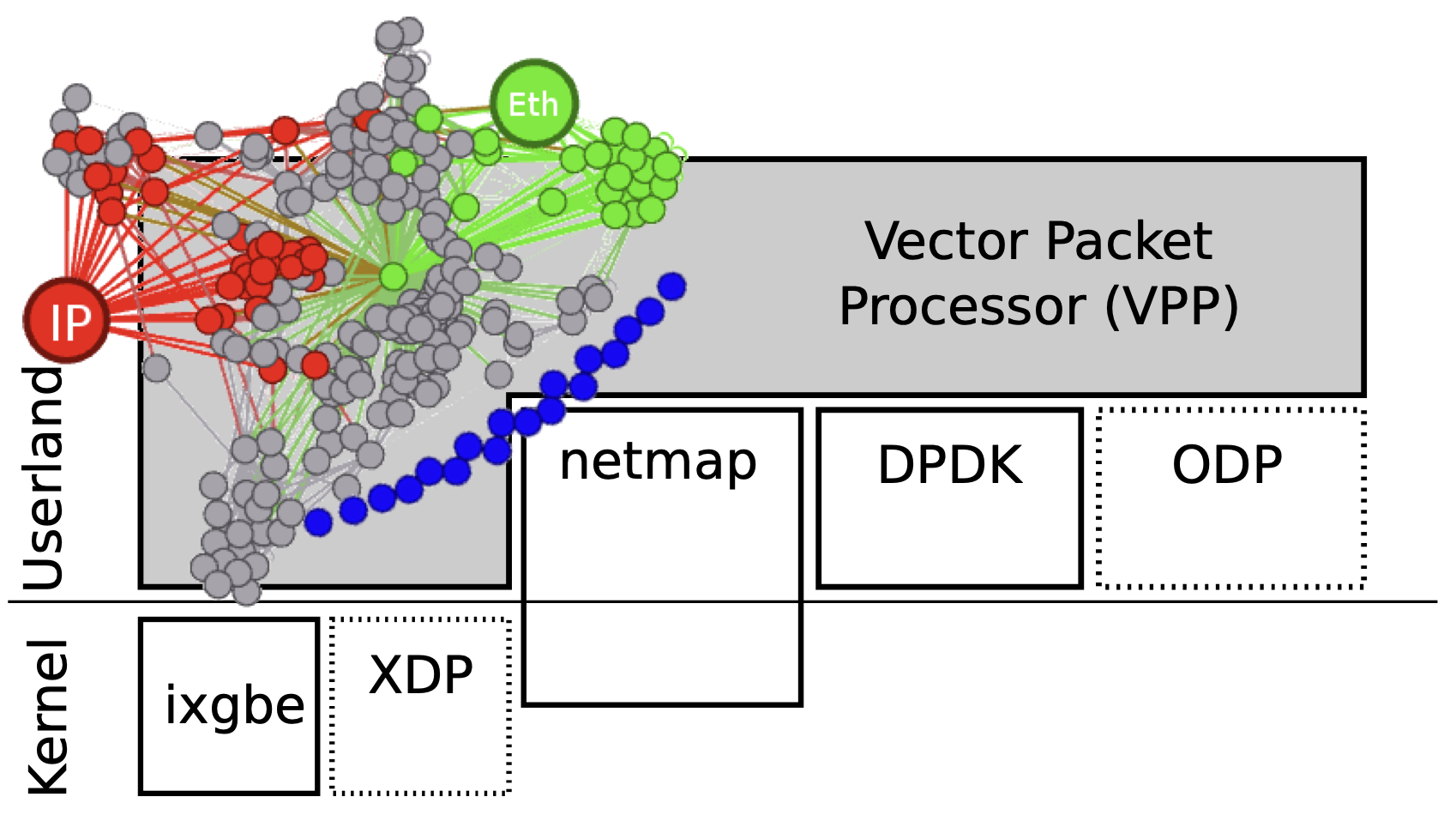Intro
Cisco Meraki employs the Click Modular Router to implement network functions on their firmwares, including wireless access points (MR), switches (MS), and gateways (MX). It is a very nice modularized implementation in C++. However, when comparing with Vector Packet Processing (VPP), it has lower performance in terms of both throughput and latency. I recently randomly hit this paper that very well explained and benchmarked VPP. One of the authors is my colleague in Cisco Meraki by the time this blog is written. (Gossip: though we also notice there are authors from Huawei as well, it does not signify that Cisco and Huawei are strong allies here ;)
Without further ado, let’s take a closer look at how VPP made it effectively faster than Click.
KBnets Techniques

The secret lies in the fact that VPP implemented many kernel-bypassing techniques. The networks that implement high-speed stacks bypassing operatin system kernels are called KBnets here. From the figure above (source here), we can see that there are multiple techniques that bypass kernel stack. The reason in behind is that user-space applications typically need to perform sys-calls which rely on the kernel as an intermediate step to access hardware device. Crossing the border between user-space and kernel-space can add additional overhead.
To better explain in details what are the techniques that VPP uses as a KBnet util, let’s dig deeper into the common off-the-shelf (COTS) hardware architecture (Intel Core i7 CPU) depicted below.

Lock-Free Multi-Threading (LFMT)
With the advance of modern CPU and computer architecture, there is a natural tendency towards using multiple cores and multi-thread programming paradigm. To further boost the performance, it is imperative to avoid performance issues tied to the use of mutex and so to achieve lock-free operation.
Low-Level Parallelism
To exploit the underlying CPU pipeline micro-structure, vectorized processing prefetch a shared instruction that can be applied to a batch of network packets, to maintain the pipeline fully running and therefore improve the throughput.
Cache Coherence & Locality (CC&L)
As depicted in the figure above, each NUMA node contains a hierarchical orgaization of caches:
- L1 Cache: access time 1ns, shared instruction and data, per-core/process
- L2 Cache: access time 10ns, per-core or shared among multiple cores
- L3 Cache: access time 60ns, shared within a NUMA node Reducing cache-misses can effectively accelerate the process.
Zero Copy (DMA)
Zero-copy can be achieved when user-space application has direct memory access (DMA) and consumes faster than the packet arrival rate.
RSS Queues
Receiver-side scaling (RSS) queues are accessible in user-space and help maintain the network flow table (e.g. identified by 5-tuple) from hardware.
I/O Batching
To optimize for CC&L and low-level CPU pipeline, and reduce interrupts as much as possible, packets are classified and buffered in different ring-buffers (accessible by both NIC and user-space application). No interrupt is raised until the ring-buffer is full.
VPP Architecture

- VPP is written in C
- Sources are organized into 2 groups
- low-level libs
- high-level plugins
- A forwarding graph is composed by the main code and plugins to describe the possible paths a packet can traverse during its lifecycle.
- VPP is NUMA-aware and cache-aware
- A list of techniques that VPP employs to accelerate the processing
- vectorized processing
- multi-loop (loop unrolling)
- branch prediction
- function flattening (inline functions)
- direct cache access (DCA)
- multi-architecture support
Benchmark
Detailed experimental evaluation using various hyperparameters can be found in this paper and a thorough comparison and benchmark can be found in this paper.
